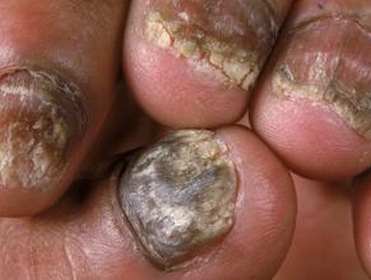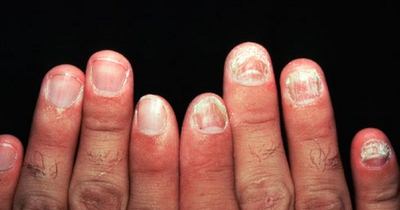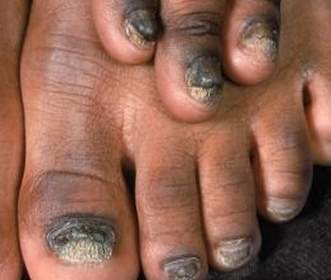Onychomycosis (Nail Fungus) – Treatment, Pictures, Sub types, Causes
What is Onychomycosis?
Onychomycosis is a disease condition that affects the person’s nail plate found in either the toes or the fingers. It is a kind of fungal infection. Most often, the reported cases are the toenails. Some experts would call it as tinea unguium, which is known as one of the largest subclass of this nail disorder. When left untreated, it leads to progressive and insidious destruction of the person’s affected nail plate. It is most commonly reported in males in the elderly ages around 40 to 80 years old.
Subtypes of Onychomycosis
There are actually three common subtypes of Onychomycosis, namely:
1. Proximal Subungual Onychomycosis (PSO)
It is a kind of fungal infection that penetrates in the proximal part of the nail fold. Amongst the three subtypes, this kind of subtype is the least common especially in people who are healthy. It is more commonly reported in persons who are known to be immunocompromised or who have an immune system that is impaired. Its etiological factors are trichophyton rubrum and fungus.
What happens here is that the fungus will enter the person’s nail bed by the proximal part of the nail fold and the skin flap that covers the nail which is located behind the affected cuticle. The root, which is the place where the nail is made, is where the fungus forays and then right after that, it will precede towards the nail’s edge.
2. Distal Subungual Onychomycosis (DSO)
Amongst the three common subtypes of Onychomycosis, this is reportedly to be the most common subtype. The etiological factors that are associated with this kind of nail disorder are dermatophytes, fungus, and trichophyton rubrum.
It begins under the person’s nail which is located at the affected finger or toes’ edge. Just like the proximal Subungual Onychomycosis, the fungus will eventually spread over the matrix of the nail and will later on inflict both the nail bed and the nail itself. The person who has this kind of subtype will experience nail plate detachment from his or her nail bed as well as discoloration on the nail plate which is affected. In addition to that, his or her nails become thicker than before. Aside from that, persons with this nail disorder subtype will report to feel uncomfortable and painful especially whenever they wear foot wears or shoes, for that matter.
3. White Superficial Onychomycosis (WSO)
This last and final common subtype is the known to be the second commonly reported subtype of infection of the nails. The causative agent associated with this subtype is trichophyton mentagrophytes and dermatophytes.
When a person has this kind of subtype, he or she will manifest white patches which are tiny and appearing on the nail plate surface. When the fungal infection spreads, the affected nails will become dry out and eventually the nail’s surface crumbles and flakes. According to studies, it becomes like that because the fungus will eat on the nail keratin and protein for its nourishment leading to the weakening of the nail plate and eventually distorting it.
There are actually three kind of white superficial Onychomycosis or WSO which are dual and classical nail plate invasion, the ventral and superficial kind and lastly the pseudo kind of WSO that have fungal invasion in the affected nail plate, which is deep.
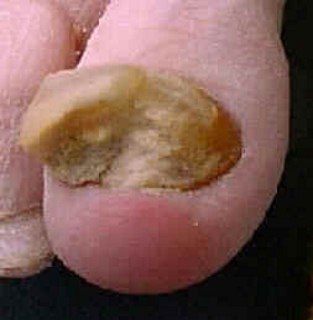
Nail changes as one of the symptoms of Onchomycosis
Onychomycosis Symptoms
Persons, who are diagnosed with this kind of nail disorder, will manifest the following symptoms associated with this kind of nail disorder, which are as follows:
- Nail shape changes
- Nail having debris trapped under it
- Loosening of the affected nail
- Thickening of the affected nail or medically termed as hyperkeratosis
- Discoloration or leukonychia such as yellow or white streaks on the nail’s side
- Lost in the shine and luster of the affected nail
- Brittleness
- Edges of the affected nail crumbles
- Paresthesia
- Opaque or cloudy appearance of the affected nail
- Inflamed affected nail
- Onycholysis or when there is a separation of the nail plate from the nail bed
- Losing of dexterity
- Discomfort
- Pain
According to studies, as the disease will progress, there is a big possibility that it will interfere with the person’s ability to walk, stand and do exercises.
Onychomycosis Causes
The etiological reason or factors or pathogens that are associated with the nail disorder called Onychomycosis are believed to be the following:
- Candida – It is an etiological factor or pathogen that is frequently reported to be involved in the subtropical and tropical region which is known to have climates that are humid and hot.
- Nondermatophytic molds – Just like Candida, the Nondermatophytic molds are frequently reported to be seen in patients who lived in the tropical and subtropical regions where their climates are humid and hot.
- Dermatophytes – The dermatophytes are what are known to be the fungi which are most responsible for this kind of nail disorder especially when the person who was inflicted in the disorder lives in the western countries.
Onychomycosis Treatment
With regards to treating Onychomycosis, experts say that it will be challenging to treat such kind of nail disorder which is brought about infection that is known to embed within the affected nail that is difficult for anybody to reach. The expected removal of the symptoms that the patient manifest will be actually slow and have the possibility to go through the recuperation phase for a year or more than that, depending on the respond of the patient to the treatment given. The common treatment which is suggested and is expected under this kind of nail disorder includes:
Pharmacological Treatment
Systemic and topical treatments are prescribed. Studies show that combination of both medications and treatments will increase the rate for recuperation of the patient. Most often the classification of the drug or medication prescribed are those belonging in the antifungal classification.
Surgical Treatment
This is the last treatment option for this kind of disease condition or nail disorder. The kind of surgical procedure done will be different per patient and will greatly depend on the physician’s assessment.
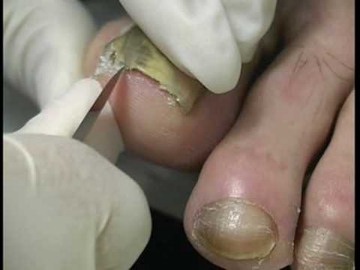
Surgical removal of the affected nail
Laser Treatment
This kind of treatment represents future option for treatment. Still, further studies are conducted. Although, some podiatrist have tried this kind of treatment to patients with Onychomycosis yet the efficacy as a treatment is still debatable at this point.
Alternative Treatment
Some would prefer alternative medicine such as grapefruit seed extract, snakeroot leaf extract, and Australian tea tree oil to cure Onychomycosis.
Onychomycosis Pictures
Image credit – skinsight.com
Source – myfootshop.com
